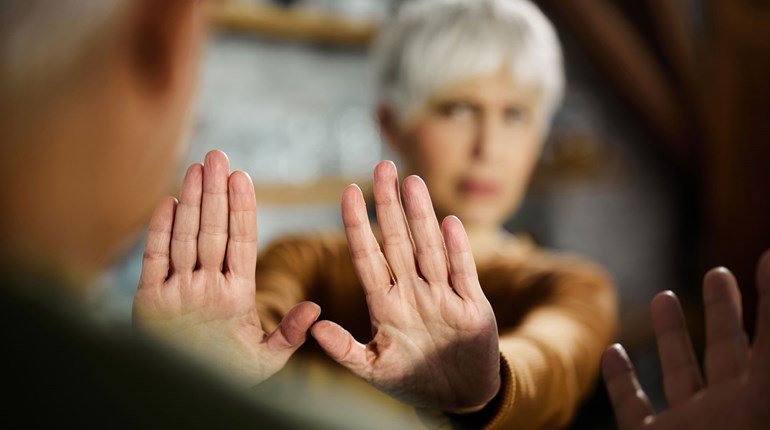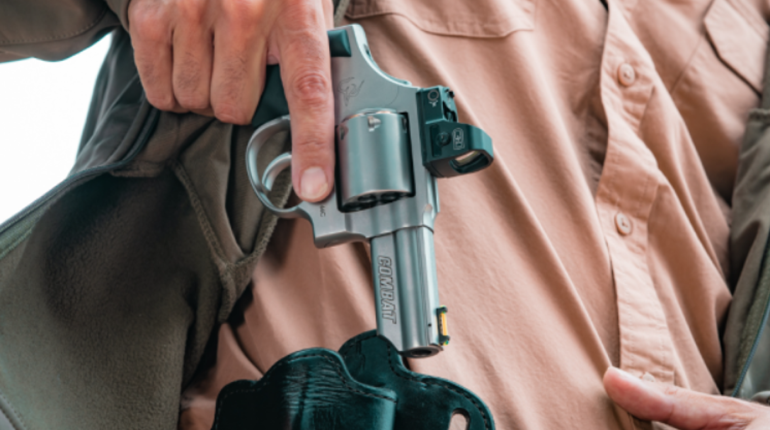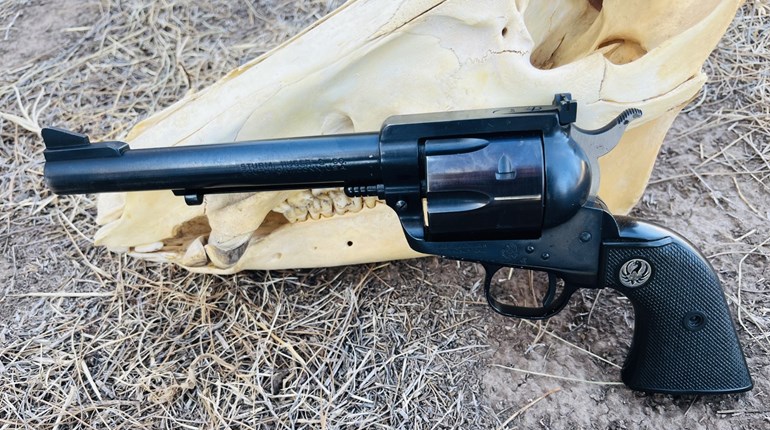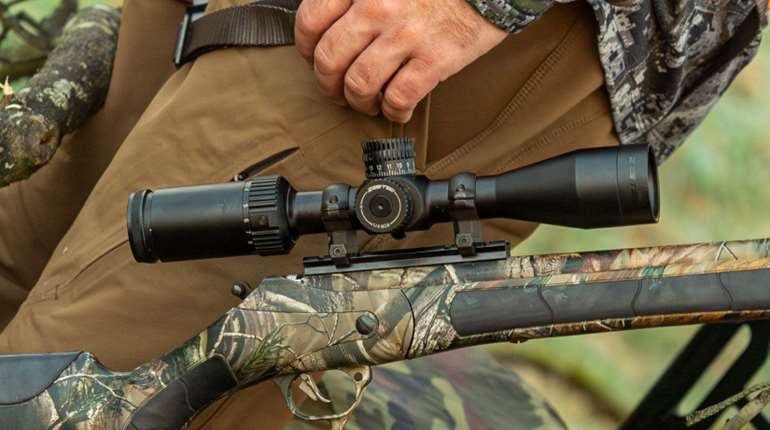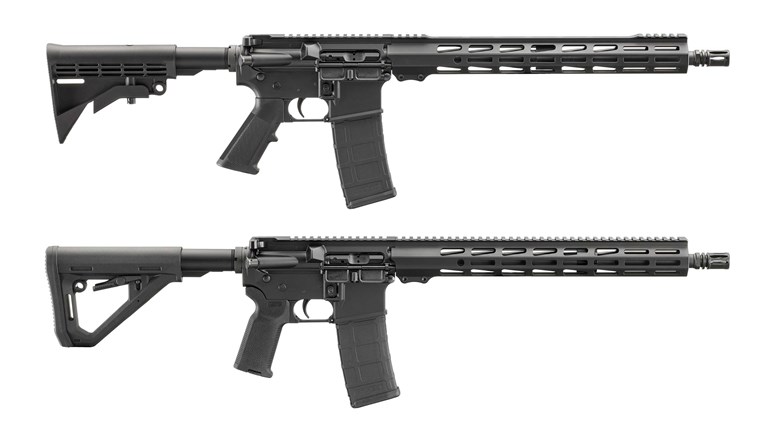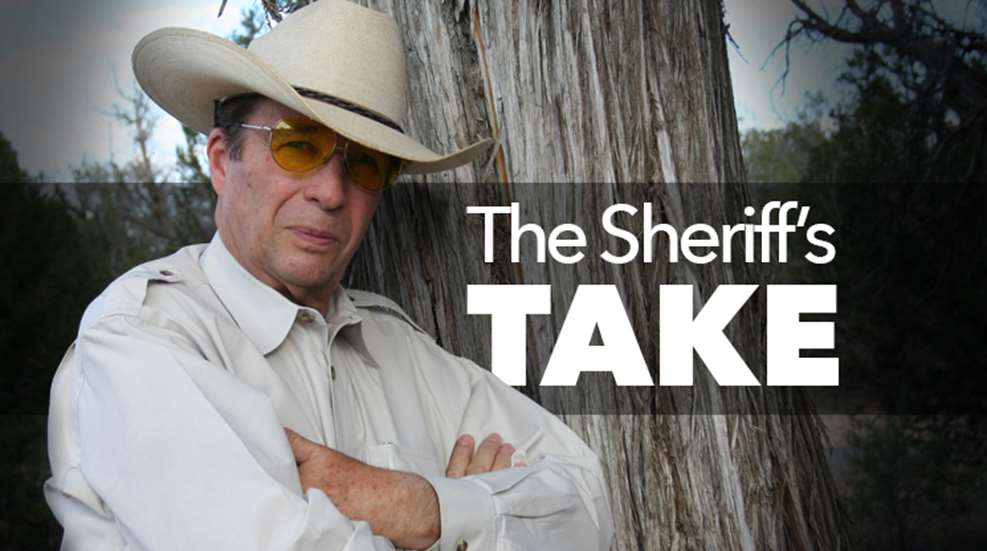
In Col. Jeff Cooper's color code, condition orange occurs when the defensive shooter spots a person, or persons, who may be a serious threat to his safety. The first thought should be to determine how to avoid the confrontation entirely. Failing that, he should be prepared to put his defensive plan into action, which includes identifying the closest cover. For our purposes, cover, as opposed to concealment, is anything that will stop or deflect bullets.
Take just a moment to look around.
I don't care if you are at home, at work or standing in front of your favorite magazine rack, in today's world you are seldom very far from something capable of stopping bullets. Given that fact, it is amazing the use of cover is not a bigger part of our defensive practice.
As much as we hate to admit it, part of the reason is due to movies and TV. We've grown up watching our heroes stand out in the open to face down evil. Matt Dillon, Wyatt Earp and John Wayne darned sure didn't hide behind stuff when the bullets started flying. Clint Eastwood stood there, flat-footed, and asked, "Well, are you gonna pull those pistols or whistle Dixie?" According to the entertainment industry, taking cover is not the manly thing to do. Well, it might not be manly, but it sure is smart.
Another reason use of cover is often overlooked is most folks practice on a standard shooting range. Policy may prohibit them from drawing from a holster, let alone practicing tactical maneuvers like taking cover. In defensive classes, it's not always easy to set up enough furniture for students to get in the habit of seeking cover. Regardless, in a real gunfight, taking cover hugely increases your chances of survival.
Defensive shooters should take note of all things around them that will stop bullets. In the home, items such as the refrigerator, large book cases, heavy wood furniture and brick walls will all accomplish the task well. On the street, the possibilities increase. Automobiles, sidewalk mailboxes, brick walls and concrete barriers exist everywhere. Even a large tree provides good cover when lead starts flying.
Conversely, plasterboard walls, most furniture and beds are some of the things that don't do a very good job stopping bullets. They may provide concealment, but they don't offer much in the way of cover. Still, they might offer some protection.
A lot depends on what the bad guys are shooting. The mattress on your bed or your living room couch may stop a .22 LR bullet, but they won't offer much protection from a magnum handgun or rifle bullet. In the dark and in a panic, one seldom has time to evaluate what sort of armament his attacker is using. No one said life was going to be fair.
In fact, things such as drywall, couches, beds and other furniture can offer some protection to the armed citizen. Depending upon what weapon the attacker is using, even marginal forms of protection may counter the bullet to a degree that could make a difference. In addition, such objects disguise the human form to an extent, making it harder for the attacker to deliver potentially fatal hits to one's vitals.
So, get behind something—preferably hard cover.
Acquiring cover should be a regular part of defensive practice. This should begin with the student incorporating movement with his firearm presentation and first-shot delivery. One should practice using the "Big step, little step" technique and practice moving in all directions. The thing to keep in mind is during all movement, the body should remain in a balanced, fighting stance. Your feet should never come together or cross each other.
Once this skill is developed, the shooter should practice shooting on the move so he can deliver accurate, aimed fire while advancing toward the closest cover. Just throwing bullets in the general direction of the threat doesn't really accomplish much, except wasting precious ammunition. Moving and shooting are not easy skills to learn, but they can be developed.
Using simulated cover on the range, the shooter should practice firing while kneeling, sitting and prone. These positions enable you to the make best use of available cover and, with practice, can be used to enhance your precision-shooting skills. This kind of practice also teaches the shooter to make maximum use of cover by keeping the major portion of his bodyprotected. Again, it is important to have a plan when considering the use of cover. For example, a bad guy may expect you to raise up over a car's fender when firing your shot, and it might be a real surprise for him when you go prone and fire from just inches off the ground. Not only are you protected by the cover offered by the engine block, you have utilized concealment to gain the upper hand on the attacker.
Dry-fire practice is also an important consideration. As mentioned earlier, we can't always practice moving to cover at a shooting range. So, get out in the driveway and work on acquiring good cover behind your car, being sure to take advantage of the front wheel and engine area for maximum protection. In the house, practice moving quickly to the closest cover and making your presentation. And, throughout all of this practice, remember to incorporate tactical and speed reloads from those varied positions.
The defensive shooter should make it a habit—part of his awareness mode—to be cognizant of the nearest available cover. In our homes and at work we have the luxury of being able to do a walk-through to identify the best cover and incorporate it into our personal-defense plan. After all, these are known areas, and we should make it a point to know them better than a criminal could. When out and about, it is a matter of continually studying what is around us and evaluating how it can be used effectively when defending ourselves from an attack.
Taking advantage of available cover greatly increases our chances of surviving a deadly criminal attack. To the person who ignores cover and chooses to stand flat-footed and fight, while I admire your courage, your tactics need work.













